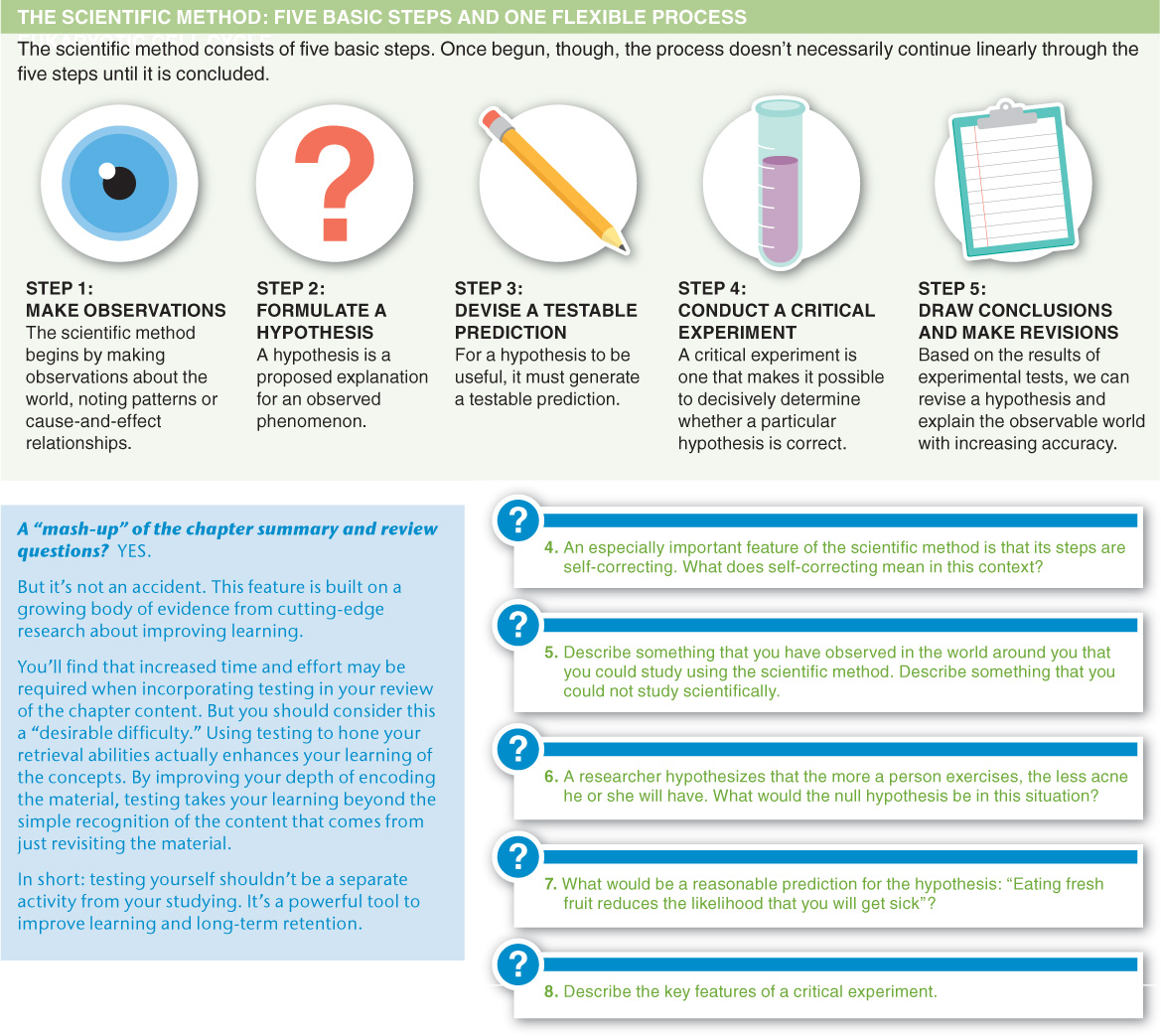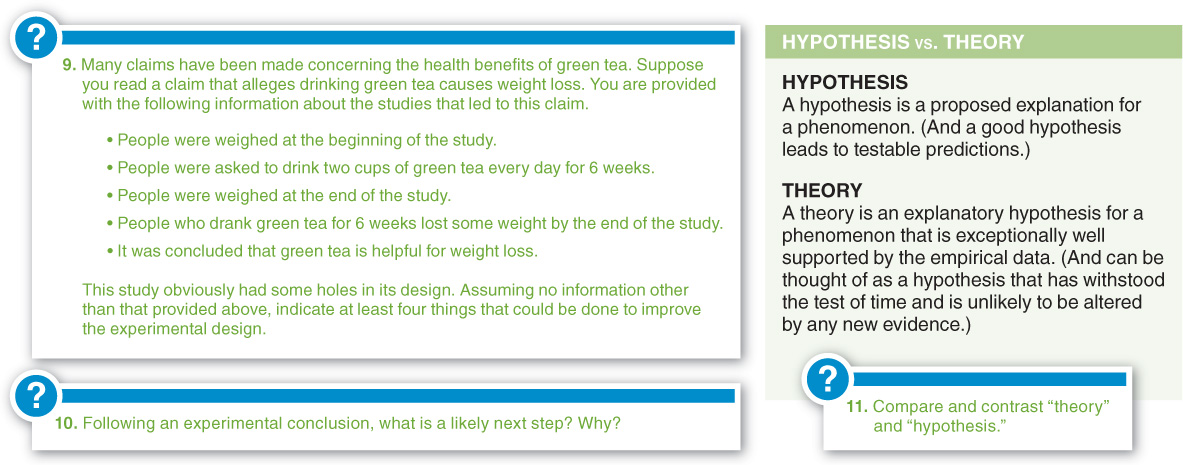1.4–1.10: A beginner’s guide: what are the steps of the scientific method?
The scientific method is a flexible, adaptable, and efficient pathway to understanding the world.

35

Question 1.18
Superstitions are:
- a) held by many humans, but not by any non-
human species. - b) just one of many possible forms of scientific thinking.
- c) true beliefs that have yet to be fully understood.
- d) irrational beliefs that actions not logically related to a course of events influence its outcome.
- e) proof that the scientific method is not perfect.

Question 1.19
To be useful in the scientific method, an observation must be:
- a) definite.
- b) measurable.
- c) proven to be true.
- d) hypothetical.
- e) All of the above are correct.

Question 1.20
Empirical results:
- a) rely on intuition.
- b) are generated by theories.
- c) are based on observation.
- d) cannot be replicated.
- e) must support a tested hypothesis.

Question 1.21
To be useful, a hypothesis will:
- a) generate a testable prediction.
- b) lead you to the conclusions you feel confident are true.
- c) establish many overlapping explanations for a phenomenon.
- d) be based on evidence that cannot be falsified by scientific experimentation.
- e) be deduced from a critical experiment.

Question 1.22
Which of the following statements is correct?
- a) A hypothesis that does not generate a testable prediction is not useful.
- b) Common sense is usually a good substitute for the scientific method when trying to understand the world.
- c) The scientific method can be used only to understand scientific phenomena.
- d) It is not necessary to make observations as part of the scientific method.
- e) All of the above are correct.
